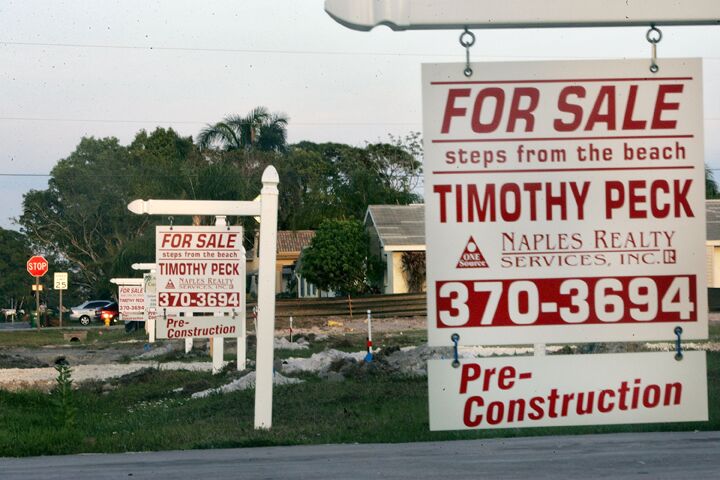
U.S. Housing Market Update: Bottom Not in Sight
Over the past five weeks, interest rates for the benchmark 30-year mortgage jumped by more than half a percent, pinching borrowers with both good and bad credit alike. As of June 21, the average rate on a 30-year fixed loan stood at 6.69 percent, sharply up from the recent May 10 low of 6.15 percent.
The rate increase will undoubtedly strengthen the headwinds blowing against an already struggling housing market. A half-percent rise indicates that the house size the average buyer can afford fell nearly 8 percent. On a typical $300,000 loan, the recent uptick in rates adds an additional $106 per month to the payment and more than $38,000 over the life of the loan. That’s a big jump in costs compared to rates available less than seven weeks ago.
Foreclosure and delinquency rates are also continuing to rise, adding further pressure on lenders to continue to tighten lending standards.
A record high 250,000 mortgages are in foreclosure across the United States, but that number looks set to climb higher as delinquencies continue to grow, especially in the subprime lending category. As of the first quarter of this year, 15.8 percent of subprime adjustable-rate mortgages were categorized as delinquent, compared to approximately 10 percent during 2005 (Quest Information Limited, June 25). But people with prime loans are evidently also being squeezed, since foreclosure rates on prime loans are at the highest level since at least 1972.
Housing sales and construction data also point to a slowing housing market.
New home sales in May were down 1.6 percent from April, and down 15 percent from one year ago. Existing home sales slipped 0.3 percent in May and are down 10.3 percent from 2006. Total unsold housing inventory rose 5 percent over the month, representing about a nine-month supply at the current sales pace, up from an 8.4 month supply in April. Overall, the supply of unsold homes now stands at a record 4.2 million units, according to the National Association of Realtors.
Unsurprisingly, as available inventory has boomed, housing starts have faltered. Construction starts in May were down 2.1 percent from April, and down a massive 24.2 percent from May 2006. Building permits were also down 21.7 percent from last year.
The confluence of rising interest rates and increased inventory seems to be finally affecting home prices. Although home prices in some areas across the nation seem to be standing firm, the median home price across the country continues to fall according to the National Association of Realtors, which noted that this year will likely be the first time since the Great Depression that U.S. median house prices declined for the year. The median home price fell for the 10th month in a row in May to $223,700, down almost 14 percent from its April 2006 peak.
In May, the National Association of Realtors reported that the national average home price dropped 1.8 percent compared to a year ago. The Case-Shiller index also showed a drop in prices, though there is at least one conflicting report. The Office of Federal Housing Enterprise Oversight showed positive appreciation at 4.3 percent over the same time frame. However, this finding was still the slowest rate of growth in 10 years.
The slowing housing market is beginning to show signs of spilling over into the general economy.
The largest U.S. homebuilder, Lennar, just reported a dramatic downturn in its finances, announcing losses of $244.2 million over the past quarter, compared to earnings of $324.7 million a year earlier. Lennar was forced to cut the average price on its homes by 7.5 percent.
Lennar’s chief executive issued the following warning: “As we look to our third quarter and the remainder of 2007, we continue to see weak and perhaps deteriorating market conditions.”
But homebuilders are not the only corporations affected by the falling housing market. The banking and finance sector is also starting to hurt. Since the beginning of last year, more than 85 major U.S. lenders have closed or declared bankruptcy, according to data cited by the Telegraph (June 26).
Last week, two massive hedge funds run by Bear Stearns with assets of close to $20 billion virtually imploded due to investments linked to the faltering subprime mortgage market. Investors fear that the Bear Stearns funds are just the leading edge in a coming storm of housing-related hedge fund casualties.
The consequences of a popping housing bubble are just beginning to appear.
“House prices are at the root of everything,” says Howard Silverblatt, a senior index analyst at Standard & Poor’s. “Not only do the borrowers and lenders lose when defaults rise and house prices decline, but interest rates rise, so consumer and corporate spending are hit, corporate profits go down and the economy suffers.”
For practical information on how to prepare for the evident downturn in the economy, read “Storm-Proof Your Financial House.”
